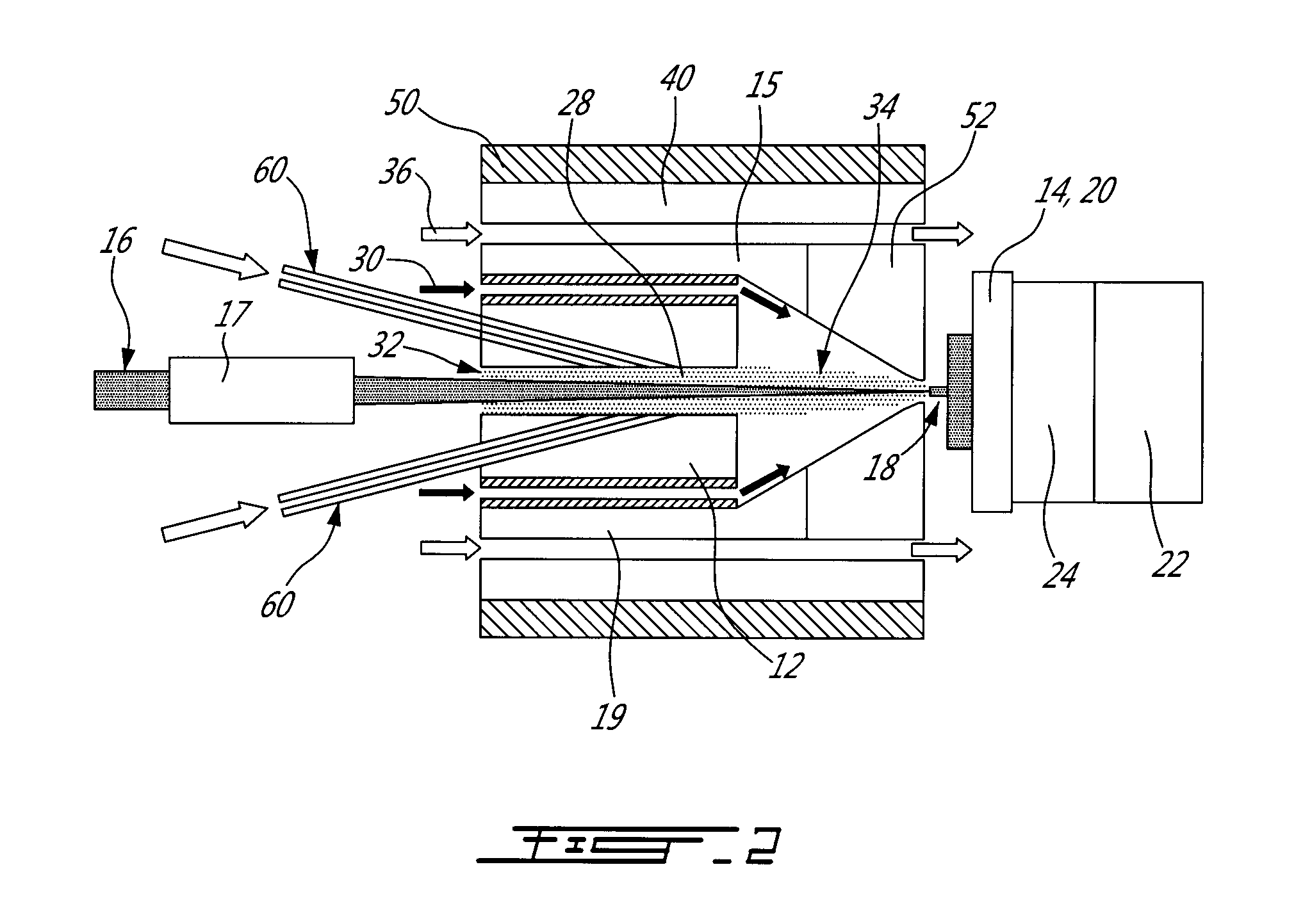System and method for fabricating macroscopic objects, and nano-assembled objects obtained therewith
a technology of macroscopic objects and nano-assembled objects, applied in the field of system and a method for fabricating macroscopic objects, can solve the problems of difficult fabrication of high-precision objects, limited range of additive fabrication techniques, and inability to construct models using standard methods
- Summary
- Abstract
- Description
- Claims
- Application Information
AI Technical Summary
Problems solved by technology
Method used
Image
Examples
Embodiment Construction
[0017]The present invention is illustrated in further details by the following non-limiting examples.
[0018]The present method and system allow assembling particles, including atoms, in the form of vapor or plasma, atomic clusters or nanoparticles, or a mixture thereof, to fabricate macroscopic objects. As known in the art, a nanoparticle has at least one of its dimensions in the nanometer range, usually less than 100 nm. In the present invention, most of these particles are generated in-situ and assembled using an energy source. Nanoparticles made ex-situ can also be added and assembled to the in-situ generated ones, using an energy source. The energy source can be local, directional or diffuse. A combination of sources can be used. Reactive gases can also be added and mixed to the particles, in order to react therewith.
[0019]A system according to a first embodiment, as illustrated in FIGS. 1-3 generally comprises an energy source, a particle generator, and a support, in an environm...
PUM
| Property | Measurement | Unit |
|---|---|---|
| Power | aaaaa | aaaaa |
| Flow rate | aaaaa | aaaaa |
| Flow rate | aaaaa | aaaaa |
Abstract
Description
Claims
Application Information
 Login to View More
Login to View More - R&D
- Intellectual Property
- Life Sciences
- Materials
- Tech Scout
- Unparalleled Data Quality
- Higher Quality Content
- 60% Fewer Hallucinations
Browse by: Latest US Patents, China's latest patents, Technical Efficacy Thesaurus, Application Domain, Technology Topic, Popular Technical Reports.
© 2025 PatSnap. All rights reserved.Legal|Privacy policy|Modern Slavery Act Transparency Statement|Sitemap|About US| Contact US: help@patsnap.com



